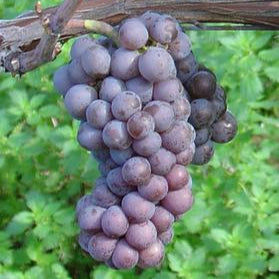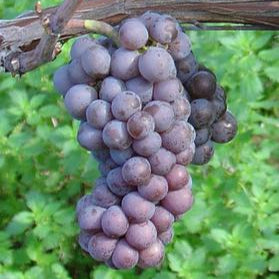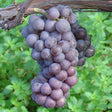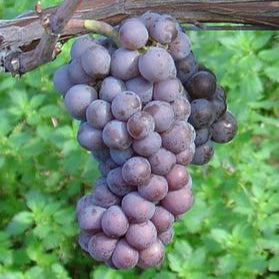General information
Pinot Gris—also known as Grauburgunder or Ruländer—is a mutation of Pinot Noir. The variety was discovered in 1711 by Johann Seger Ruland in an overgrown vineyard in Speyer. It is internationally known as Pinot Grigio or Tokaj. The grape is cultivated on approximately 15,000 hectares worldwide, 4,450 of which are in Germany. The largest plantings are found in Baden, Rheinhessen, and the Palatinate.
Grape
The name refers to the gray to violet color of the skin. The bunches are medium-sized, cylindrical, and closed. The berries are round to elongated. The compact bunch structure of classic clones carries an increased risk of botrytis and secondary rot. Newer clones have been selected for looser bunches. Yields range from moderate (for higher-quality wines) to high (for basic wines).
Wine
Light, lively Pinot Grigio-style wines are possible from harvests up to 90°Oe. A later harvest produces a more powerful Burgundy-style wine with aromas of pineapple, walnut, dried fruit, and sultanas. In favorable years, noble sweet wines such as Auslese or Beerenauslese can be made.
Cultivation advice
Pinot Gris thrives in well-aerated, deep, limestone soils. Classic clones rarely fail to flower. Newer selections may form looser bunches during flowering in unfavorable weather. Ripening generally occurs a week earlier than Pinot Blanc.
Preparing the vine
Soak your vine in a bucket of water for 24 hours. This allows it to soak up some water before planting.
Ground preparation
- On calcareous soil: improve with lava grit
- On sandy soil: improve with bentonite and lava flour
Planting out
Using a soil auger or spade, dig a planting hole 10 cm in diameter and approximately 30 cm deep. Insert the graft just above the ground, so that the vine protrudes 5 to 10 cm above the ground. Plant your vines between May 1st and 15th.
Planting distance
- In line: 1 meter
- Between rows: 1.5 to 1.8 meters






